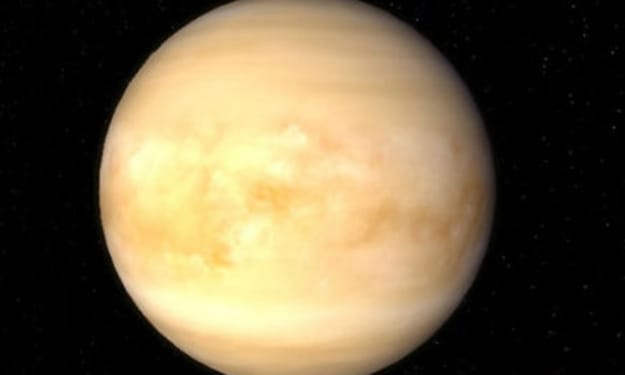
**Earth: The Blue Planet**
Earth, our home, is the third planet from the Sun and the only known celestial body to harbor life. Its unique combination of atmosphere, water, and landmasses creates an environment that supports a vast array of ecosystems and biodiversity. This essay explores Earth's physical characteristics, geological features, climate, and the significance of its biosphere, emphasizing the delicate balance that sustains life.
**Physical Characteristics**
Earth is approximately 12,742 kilometers in diameter and orbits the Sun at an average distance of about 149.6 million kilometers. This distance, known as the "Goldilocks zone," is ideal for maintaining liquid water, a crucial ingredient for life. The planet's surface is 71% water, with the remaining 29% consisting of continents and islands. This balance between water and land is essential for the diverse habitats found on Earth.
The planet's structure is divided into several layers: the inner core, outer core, mantle, and crust. The inner core is solid and composed mainly of iron and nickel, while the outer core is liquid. The mantle, a thick layer of silicate rock, lies between the outer core and the crust. Earth's crust is divided into tectonic plates that float on the semi-fluid mantle, causing geological activity such as earthquakes and volcanic eruptions.
**Geological Features**
Earth's surface is dynamic, shaped by both internal and external forces. Plate tectonics play a crucial role in forming mountains, ocean basins, and other geological features. The movement of tectonic plates can create volcanoes, earthquakes, and the formation of new crust at mid-ocean ridges. For example, the Himalayas were formed by the collision of the Indian and Eurasian plates.
The planet also experiences erosion and weathering, processes that break down rocks and minerals. Water, wind, and ice are the primary agents of erosion, sculpting landscapes over millions of years. River valleys, canyons, and coastal cliffs are all examples of landforms created by erosive forces.
**Climate and Atmosphere**
Earth's atmosphere is a thin layer of gases that surrounds the planet, composed mainly of nitrogen (78%) and oxygen (21%), with trace amounts of other gases such as carbon dioxide and methane. The atmosphere is divided into several layers: the troposphere, stratosphere, mesosphere, thermosphere, and exosphere. The troposphere, the lowest layer, is where weather occurs and where most life exists.
The greenhouse effect, a natural process in which certain gases trap heat from the Sun, keeps Earth's surface warm enough to support life. However, human activities, such as burning fossil fuels and deforestation, have increased the concentration of greenhouse gases, leading to global warming and climate change. These changes have significant impacts on weather patterns, sea levels, and ecosystems.
Earth's climate is influenced by various factors, including its tilt, orbit, and rotation. The tilt of Earth's axis (approximately 23.5 degrees) causes seasonal variations in temperature and daylight. The planet's orbit around the Sun is slightly elliptical, contributing to changes in solar radiation received at different times of the year.
**The Biosphere**
Earth's biosphere encompasses all living organisms and their interactions with the environment. It includes diverse ecosystems such as forests, grasslands, deserts, and oceans. The biosphere is characterized by the flow of energy and the cycling of nutrients, processes that sustain life on the planet.
Photosynthesis, performed by plants, algae, and certain bacteria, converts solar energy into chemical energy, producing oxygen and organic compounds. These compounds serve as food for other organisms, forming the base of the food web. Decomposers, such as fungi and bacteria, break down dead organic matter, returning nutrients to the soil and completing the cycle.
Biodiversity, the variety of life forms on Earth, is vital for ecosystem resilience and stability. Each species plays a specific role in its ecosystem, contributing to functions such as pollination, seed dispersal, and nutrient cycling. However, human activities, including habitat destruction, pollution, and climate change, threaten biodiversity and disrupt ecosystem services.
**Human Impact and Stewardship**
Humans have significantly altered Earth's environment through activities such as agriculture, industrialization, and urbanization. These changes have led to deforestation, soil degradation, air and water pollution, and the loss of biodiversity. Addressing these environmental challenges requires sustainable practices and global cooperation.
Efforts to mitigate climate change, conserve natural resources, and protect endangered species are crucial for maintaining Earth's health and the well-being of future generations. Renewable energy sources, conservation programs, and sustainable agriculture are examples of initiatives aimed at reducing human impact on the environment.
**Conclusion**
Earth, with its unique combination of atmosphere, water, and landmasses, supports a diverse array of life forms. The planet's physical characteristics, geological features, climate, and biosphere create a dynamic and interconnected system. As the only known planet to harbor life, Earth holds a special place in the universe. It is our responsibility to understand, appreciate, and protect this delicate balance to ensure the continued flourishing of life on our remarkable planet.
About the Creator
Enjoyed the story? Support the Creator.
Subscribe for free to receive all their stories in your feed. You could also pledge your support or give them a one-off tip, letting them know you appreciate their work.






Comments
There are no comments for this story
Be the first to respond and start the conversation.